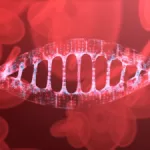Kirk Bloodsworth’s exoneration through DNA DNA, or Deoxyribonucleic Acid, is the genetic material found in cells, composed of a double helix structure. It serves as the genetic blueprint for all living organisms. Read Full Definition evidence
DNA, or Deoxyribonucleic Acid, is the genetic material found in cells, composed of a double helix structure. It serves as the genetic blueprint for all living organisms. Read Full Definition evidence

- The Wrongful Conviction of Kirk Bloodsworth
- The Breakthrough: DNA Testing and Exoneration
- The Power of DNA Evidence in Criminal Convictions
- The Exoneration: A Famous Case of DNA Wrongful Convictions
- Exclusion and Identifying the Real Culprit
- The Impact of Bloodsworth’s Case on the Innocence Movement
- Ongoing Challenges in the Pursuit of Justice
- The Legacy of Kirk Bloodsworth and Famous Exoneration Cases
- A Symbol of Hope for the Innocent on Death Row
- The Role of Education and Awareness in Addressing Criminal Justice System Flaws
- Conclusion: The Ongoing Impact of the First DNA Case in the United States
The Wrongful Conviction of Kirk Bloodsworth
In 1984, Kirk Bloodsworth, a former Marine and a promising athlete from Maryland, found himself ensnared in a harrowing ordeal. He was wrongfully convicted for the rape and first-degree murder charges related to nine-year-old Dawn Hamilton in Rosedale, Maryland. The prosecution’s case relied heavily on eyewitness testimonies—five witnesses claimed to have seen him with the victim, only to be proven mistaken years later. Despite maintaining his innocence, Bloodsworth was sentenced to death based on the misidentifications of witnesses who claimed to have seen him with the victim.
Eyewitness Misidentification and False Identification
Eyewitness testimony has long been considered a critical component of criminal prosecutions. However, studies have shown that such testimonies can be unreliable, often leading to false identification. In Bloodsworth’s case, two of the eyewitnesses had seen his image on television after the crime, which influenced their identification. This phenomenon, known as “post-event misinformation,” underscores the fallibility of human memory and the dangers of relying solely on eyewitness accounts in the judicial process.
The Role of Circumstantial Evidence
In addition to eyewitness accounts, the prosecution presented circumstantial evidence, including forensic analysis that purportedly linked Bloodsworth to the crime. However, the absence of physical evidence connecting him to the scene raised significant doubts about the investigation’s integrity. Despite these concerns, Bloodsworth was wrongly convicted and given a death sentence, marking the beginning of a long and arduous fight for justice.
The Breakthrough: DNA Testing and Exoneration
The turning point in Bloodsworth’s case came in 1992 when he learned about the advancements in DNA testing, when he came across a news article detailing how DNA testing had played a crucial role in the conviction of Colin Pitchfork, a murderer in England. This revelation sparked hope within Bloodsworth, and he embarked on a quest to utilize DNA testing to prove his innocence. He petitioned for DNA testing on the evidence collected from the crime scene, which had been preserved despite initial claims that it had been destroyed.
Initially, it was believed that the available evidence, including traces of semen found in the victim’s underwear, had been destroyed. However, the evidence was discovered in a paper bag in the judge’s chambers after diligent searching.
The Power of DNA Evidence in Criminal Convictions
DNA testing is a powerful forensic tool that can provide conclusive evidence of guilt or innocence. In Bloodsworth’s case, DNA analysis of biological material (semen) found at the crime scene definitively excluded him as the perpetrator. Astonishingly, this newfound evidence exposed the injustice that had been perpetrated against Kirk. His exoneration brought attention to the glaring flaws in the justice system and highlighted the significance of DNA evidence in uncovering the truth.
The results not only confirmed his innocence but also pointed to the actual perpetrator of the case years later.

The Exoneration: A Famous Case of DNA Wrongful Convictions
On June 28, 1993, after nearly nine years of wrongful imprisonment, Kirk Bloodsworth was exonerated. His release marked a significant milestone in the history of the American legal system, as he became the first death row inmate to be exonerated through DNA evidence. This landmark case highlighted how DNA evidence proves innocence and raised awareness about the flaws in the criminal justice system.
Exclusion and Identifying the Real Culprit
In 2003, DNA evidence from prisoners entered into state and federal databases revealed a match to the real perpetrator—Kimberly Shay Ruffner, who had committed a similar attack shortly after Kirk’s arrest and was found to be the true culprit behind the 1984 rape and murder. Ruffner pleaded guilty to the charges. He was convicted and sentenced to life in prison in 2004, finally bringing closure to this tragic case.
The Impact of Bloodsworth’s Case on the Innocence Movement
Kirk Bloodsworth’s exoneration had far-reaching implications for the criminal justice system and the reform movement. His case became a rallying point for advocates seeking to prevent wrongful convictions and promote the use of DNA evidence in criminal investigations, giving rise to what is now known as the innocence movement.
Advocacy for Criminal Justice Reform
Following his release, Bloodsworth became a passionate advocate A person who aligns themselves with the patient, providing emotional support, referral services for follow-up, contact with social services, legal assistance, arrangements for transportation, presence in court, and for other needs. Read Full Definition for criminal justice reform. He worked tirelessly to raise awareness about the issues surrounding wrongful convictions and the importance of DNA testing. His efforts contributed to establishing the Innocence Protection Act of 2004, which aimed to provide funding for post-conviction DNA testing and support for exonerees.
A person who aligns themselves with the patient, providing emotional support, referral services for follow-up, contact with social services, legal assistance, arrangements for transportation, presence in court, and for other needs. Read Full Definition for criminal justice reform. He worked tirelessly to raise awareness about the issues surrounding wrongful convictions and the importance of DNA testing. His efforts contributed to establishing the Innocence Protection Act of 2004, which aimed to provide funding for post-conviction DNA testing and support for exonerees.
Abolishing the Death Penalty in Maryland
Bloodsworth’s advocacy extended to the abolition of the death penalty in Maryland. In 2013, he played a crucial role in the state’s decision to repeal capital punishment, citing the risk of executing innocent individuals. His personal experience underscored the moral and ethical dilemmas associated with the death penalty, further fueling the movement for reform and highlighting the issue of the death penalty’s innocence rate.
Ongoing Challenges in the Pursuit of Justice
Despite the progress made since Bloodsworth’s exoneration, significant challenges remain for individuals seeking justice in the criminal justice system. Many exonerees continue to face obstacles in obtaining post-conviction DNA testing, often encountering resistance from prosecutors and judges.
Procedural Hurdles and the Role of Innocence Organizations
While the Innocence Protection Act has provided some support for post-conviction DNA testing, many prisoners still face procedural hurdles. Obtaining access to DNA evidence can be a complex and lengthy process, often requiring legal battles that take years. The reluctance of some prosecutors to revisit cases, coupled with the challenges of navigating the legal system, can hinder efforts to prove innocence. This is where innocence organizations like the Innocence Project and the Maryland Innocence Project play a crucial role in supporting exonerees and advocating for justice.
The Need for Continued Advocacy
The fight for criminal justice reform is ongoing, and advocates like Bloodsworth continue to push for changes to ensure fair treatment for all individuals within the system. This includes advocating for policies that promote transparency, accountability, and the use of scientific evidence in criminal investigations and addressing issues of prosecutorial misconduct that can lead to wrongful convictions.
The Legacy of Kirk Bloodsworth and Famous Exoneration Cases
Kirk Bloodsworth’s journey from wrongful conviction to exoneration serves as a powerful reminder of the importance of justice and the potential for reform within the criminal justice system. His story has inspired countless individuals and organizations to work towards preventing wrongful convictions and ensuring that the rights of the accused are protected.
A Symbol of Hope for the Innocent on Death Row
Bloodsworth’s case has become a symbol of hope for those who have been wrongfully convicted, especially for individuals who are innocent on death row. His resilience and determination to seek justice have inspired others to share their stories and advocate for change. The establishment of organizations like Witness to Innocence, which supports death row exonerees, is a testament to the impact of his advocacy.
The Role of Education and Awareness in Addressing Criminal Justice System Flaws
Education and awareness are crucial components in the fight against wrongful convictions and in addressing criminal justice system flaws. Bloodsworth has helped shed light on the systemic issues within the criminal justice system by sharing his story and the stories of other exonerated individuals. This increased awareness can lead to greater public support for reform and the implementation of policies prioritizing justice and fairness.
Conclusion: The Ongoing Impact of the First DNA Case in the United States
Kirk Bloodsworth’s exoneration marked a pivotal moment in the history of the American criminal justice system. As the first DNA case in the United States to exonerate a death row inmate, it not only highlighted the potential of DNA evidence to rectify wrongful convictions but also underscored the need for ongoing reform. Establishing the Kirk Bloodsworth Post-Conviction DNA Testing Grant Program further solidifies his legacy and commitment to justice.
As we continue to confront the challenges within the system, Bloodsworth’s story serves as a powerful reminder of the importance of justice, advocacy, and the relentless pursuit of truth. Through continued efforts to promote criminal justice reform and support exoneree advocacy, we can work towards a future where wrongful convictions are a thing of the past and the rights of all individuals are upheld. The impact of DNA fingerprinting and other scientific advancements in forensic science continues to shape the landscape of criminal justice, offering hope for those who have been wrongly accused and convicted.











